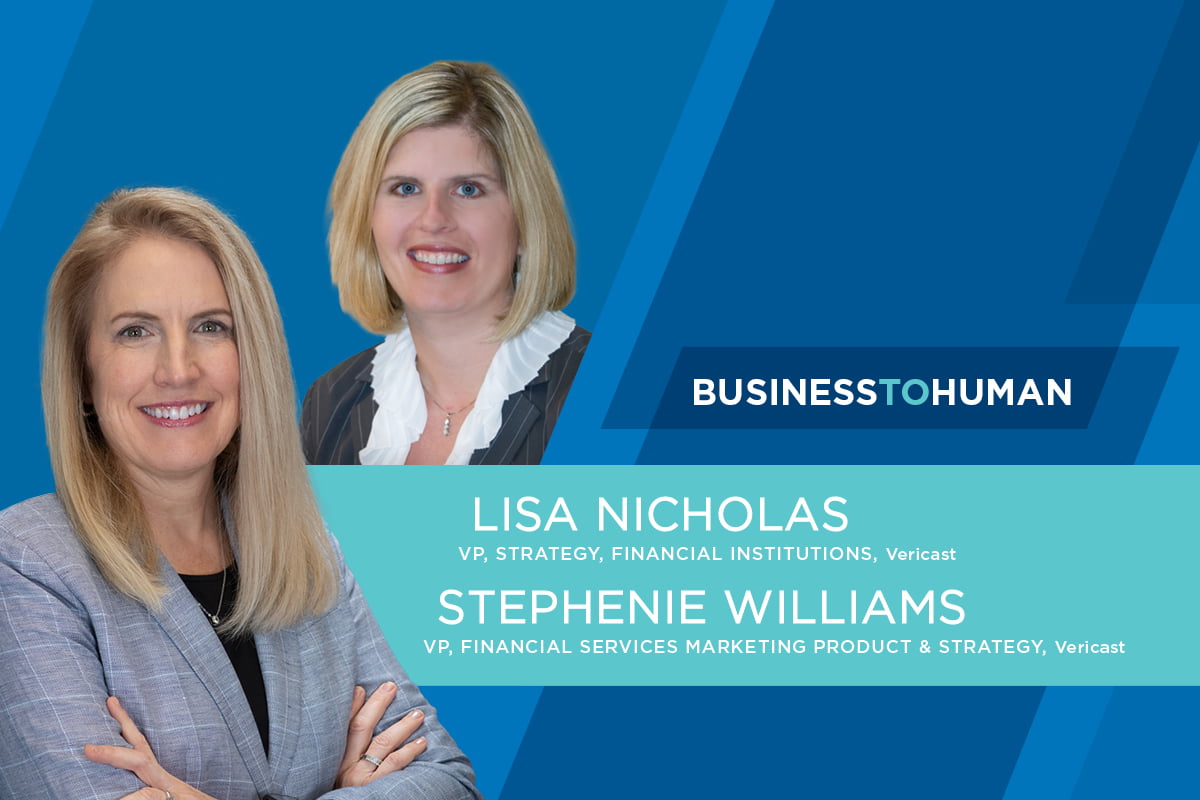The financial markets may be in flux, but that doesn’t mean your financial marketing has to be.
With a solid plan, your marketing won’t just survive, it will thrive — even in today’s chaotic times.
In a special episode of the Business to Human podcast, Vericast’s own Lisa Nicholas, VP of Strategy, Financial Institutions, and Stephenie Williams, VP of Financial Services Marketing Product and Strategy join the show to share the best ways banks and credit unions can market themselves to customers and prospects today.
Join us as we discuss the following:
- Why cost restriction is the number one issue clients face when marketing their business
- How to educate consumers about what’s happening in the banking industry
- Proactively reaching out to customers and working with them to reduce the friction
Why cost restriction is a client’s number one marketing issue
When it comes to credit union clients marketing a business, cost restriction is often the number one issue. This boils down to efficiency.
Every dollar becomes so critical and has to be maximized that thinking about how to spend their money becomes their top priority. Selecting the right channels and the best mix of fund allocation should be reconsidered regularly.
With the current public perception of banking in turmoil, clients are changing the way they look at their relationships with financial institutions altogether. Clients can alleviate some of the negative press by not panicking and pulling out all their funds.
However, many are moving their money to larger institutions.
How to educate consumers about what’s happening in the banking industry
With the perception of banking at risk, marketers need to ensure that their clients are educated on what’s really going on.
Arming clients with facts and making sure they know what they should and shouldn’t be worried about in a changing banking environment is crucial for retention. Ultimately, consumers will make their own decisions, but paranoia can be avoided through education.
It’s easy for one headline to reach millions of people in an overgeneralized way. But be open and honest with your clients about what is going on in the banking industry, without denial or sugarcoating, and they’ll trust you over the media reports.
“When something like this happened the last time, you didn’t have social media, there were commercials,” explains Lisa. “It’s all amplified now, the consumer is aware and savvy — not that they weren’t savvy back then. But you have social media; you have things we didn’t have before.”
Proactively reaching out to customers to reduce friction
Reaching out to clients intentionally will show them that you’re truly paying attention, caring for them and their finances, which builds trust. It makes them less likely to move their money to other institutions in times of uncertainty and trouble.
At the end of the day, consumers seek a relationship with their financial institution to gain confidence that their finances are properly cared for. Knowing your customer and customizing their experience with your bank can help cut through the noise of negative media reports and earn you a loyal client who is focused on the positive experiences they’ve had with you.
“We’ve seen in the data that it’s not just about reaching out to customers. It’s about knowing them and reaching out to them about what’s important based on all the data you have about them and their financial life,” says Stephenie.
Contact them about specifics in their portfolio instead of generalized mass communications so they know you’re paying attention. Listen to client needs and competitors’ offers and act accordingly.
When people lose trust in banking, it’s up to your marketing team to remind them that your institution is a safe space for both them and their funds.
Want to learn more about banking challenges that your customers are facing, how to best solve them and how to form trustworthy relationships with consumers? Listen on Apple Podcasts, Spotify or wherever you find your podcasts.
